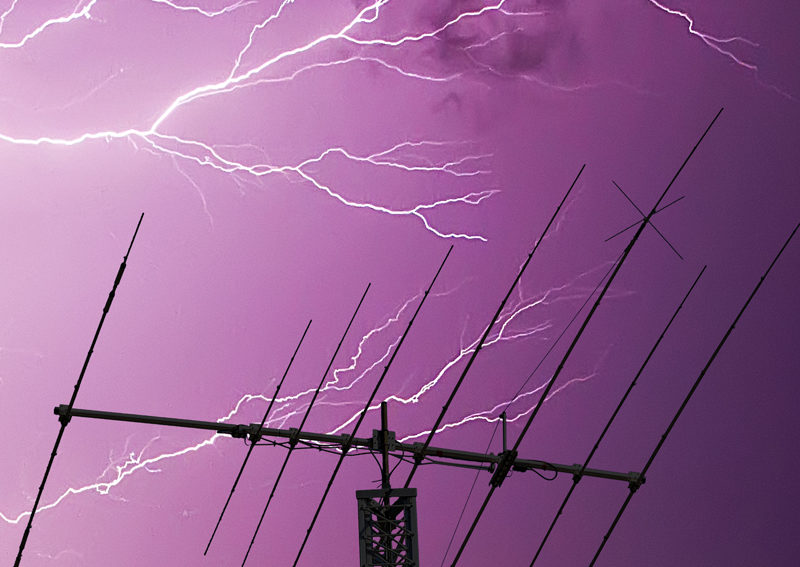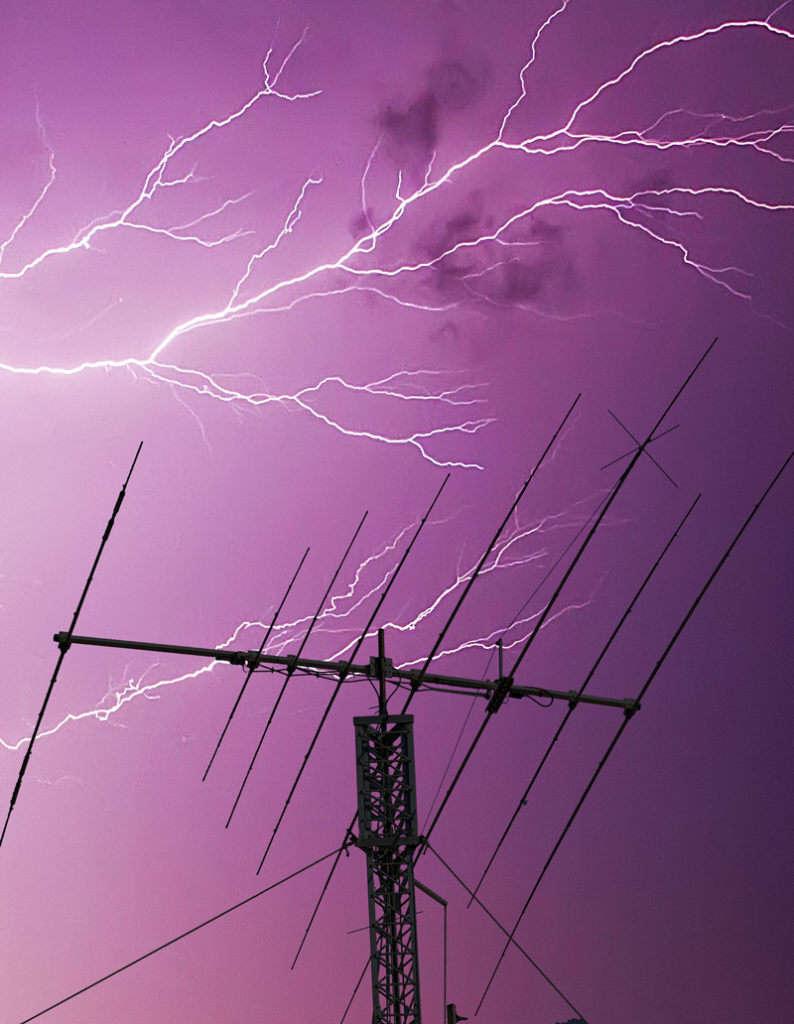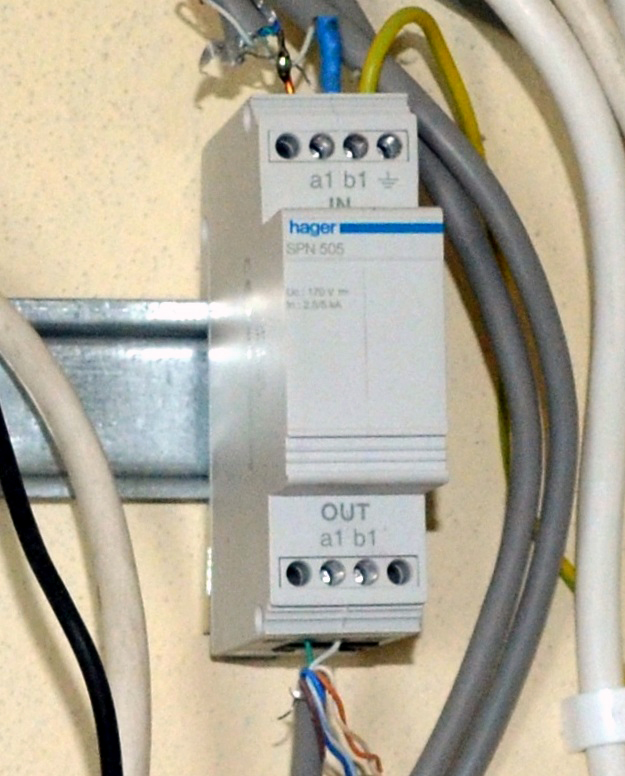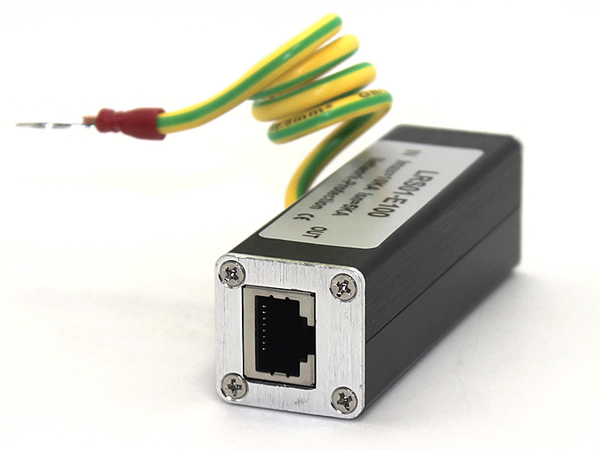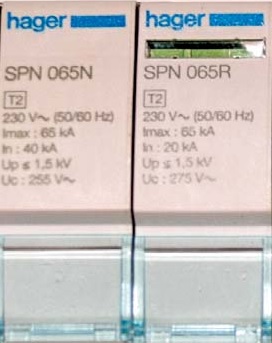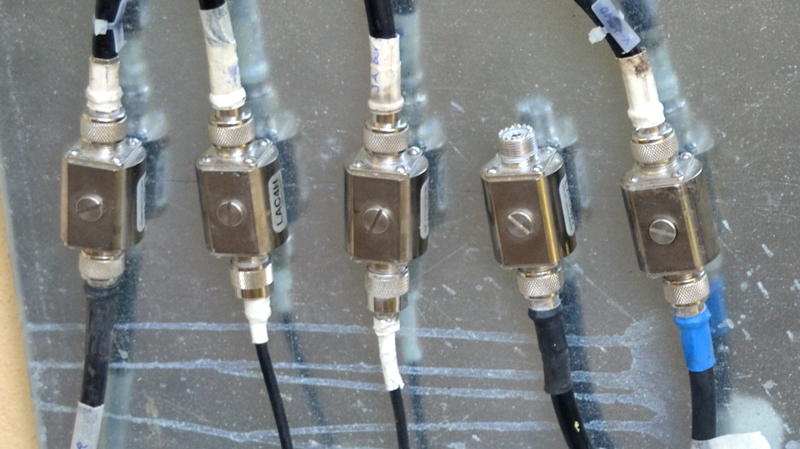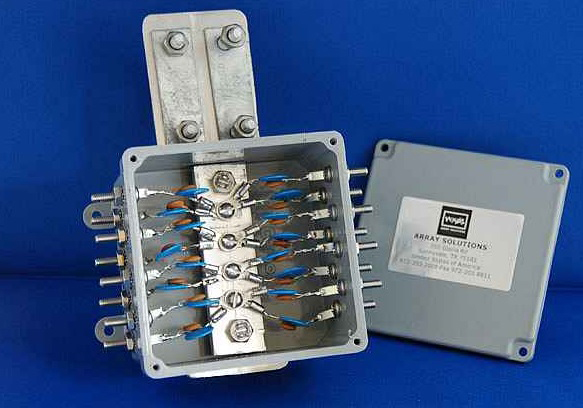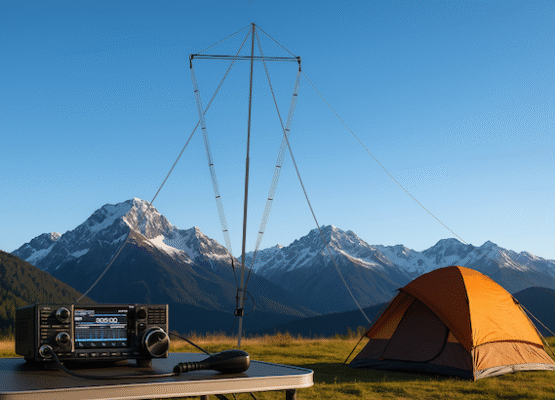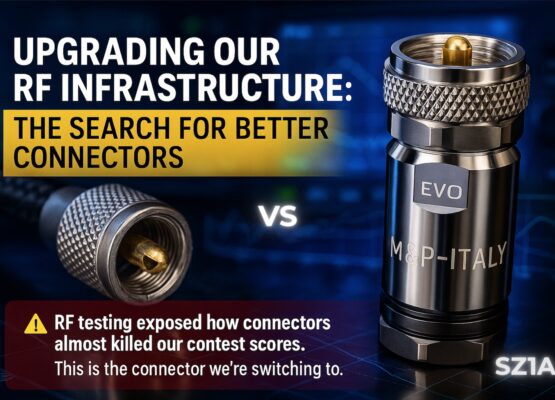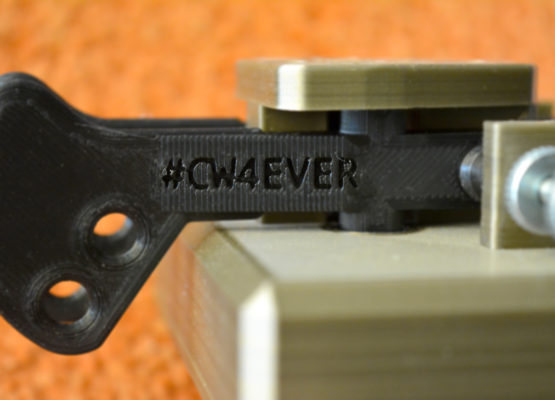Is there really a danger of “the sky falling on our heads”?
Lightning protection of our station and our house is always a move in the right direction. Let’s see how it is done and let’s examine some facts but also myths that are circulating about the phenomenon of lightning …
The fearless Gauls were afraid of one thing: do not let the sky fall on their head… It’s kind of the same with radio amateurs: one of the only things that truly scares us is if lightning strikes one of our antennas… How many of us have heard: “A lightning bolt will strike you with all the antennas you have put up!”
How likely is it that lightning will eventually strike us?
There are many myths we have created and so many others for which we are not to blame. Statistically, there is not such a high risk of a direct lightning strike… The risk of lightning striking directly may be statistically small, but feeling its “whiskers”, as we say, is something that happens very often…
How lightning is created is something that as radio amateurs is not our main concern. What we need to know, in contrast to what is commonly thought, is that on the one hand we can not repel it and on the other hand it is not easy to challenge it with our facilities!
So, in the end, what am I at risk of?
Most of the time, we are endangered by surges that lightning creates in a wider area.
But how can a lightning surge enter an amateur radio station?
From our “connections” with the outside world, or more correctly put from any cable that enters or leaves our station:
- From the telephone line.
- From the PPC power line.
- From the feedline of our antenna.
- From rotor, switch, antenna (steppir) control cables
- From the ground (!!!)
So we must keep in mind that for good lightning protection, every connection of our station with the outside world must be protected! Everything that enters our shack must be protected so that it does not bring in anything bad. Most of the time, it is not enough to just put a lightning arrestor on our antenna coax and not at very least disconnect the antennas and unplug them during a storm!!!
But let’s look at the cases one by one…
From the telephone line
It is very common. Telephone companies should have surge protection devices installed on the line. Unfortunately, they do not always exist or sometimes their maintenance is incomplete and they do not work as they should. So a surge can travel far. It usually damages the router – DSL modem, telephone devices, network card of our computer, any Ethernet switch, webcams, VOIP, Remoterig (if we have one) or anything else connected to the router…
How do we deal with this case?
The least we can do is connect the telephone line through the UPS (when our UPS has such a line protection feature) or through various power strips that have telephone line protection. Unfortunately, this does not provide us with enough protection.
Also, a good solution is the wireless connection of devices!
The best solution, though, is installing a dedicated surge protection device on the telephone line. It costs around €70-€100 for SPDs that also support ADSL (Fig. 2). They are produced by several companies and you can find a lot of these devices on the market. Here is one of them in figure 2: The Hager SPN 505
There are also lightning protection devices for protection of Ethernet cables (Fig. 3). Of course, it will not be necessarily required if we have protection on the telephone line but it is not so expensive (especially ones from China). You can find them on ebay by searching for RJ45 lightning arrestor and they usually cost between €6 to €10. You can place them between the router and whatever expensive equipment the shack has and connects via ethernet cables to the router. Don’t forget to always keep the ground wire as sort as possible, because a long wire can have more resistance than the path to ground via the ethernet cable itself.
From the Power Line
It is a very common phenomenon. How many times did the neighbour’s TV not turn on and they blamed us? Many times it happens that lightning strikes somewhere far away and a large voltage surge passes via power lines reaching our home. It damages any device that has sensitive electronics, that is, in the case of today’s house, everything! Radios (usually our power supply), rotors, air-conditioning units (especially Inverters), refrigerators (newer ones), TVs, videos, stereos, boilers (the control circuit), routers, etc.
How do we protect ourselves from these surges?
The correct solution is the installation of a surge protection device of type T1 / T2 AND the installation of surge protection on the plug outlet for each device separately (type T3 and there is also a T3 rail-mounted SPD if there is space in the electrical distribution panel) (Fig.4). For homes in rural locations or in high-risk locations, both T1 and T2 SPDs, and T3 outlets are required. For houses within an urban neighbourhood, types T2 and T3 are sufficient. You can find T1 and T2 SPDs in electrical stores. CAUTION! The specific work of installing these lightning protection devices in the electrical panel, must by regulation, be done by a licensed electrician. There is a risk of electric shock!
For T3 plug outlet SPDs, prefer to purchase branded products since there are many that do not do the job properly (they are not fast enough or they can not “handle” the surge). Be careful not to connect too many devices to each one, as their power handling capability is limited (usually 16A). Also, Line Interactive & Online UPS (beware not all UPS) can play this role to a large extent although using a UPS for this purpose is not the best solution.
From our antennas…
To start with, let’s see how to protect the actual antenna… If we want to protect the antenna itself, we have to install a spike lightning rod much higher. Spike lightning rods are designed to protect superstructures. It must be placed higher than the antenna so as to create a protection cone below it. However, this installation is not common. The cost of a trap or a Balun is not high enough to justify such an installation. Especially if we have pure aluminium antennas with no circuitry…
But what about the tower? Here we have an issue… If lightning strikes the tower and finds no other path to the ground, it will do significant damage to the foundation of the tower. The concrete foundation itself “raises” the resistance to ground and in case of a direct lightning strike, the concrete foundation will crack from the high temperature. This can even result in the collapse of our tower! So we have to ground the tower. The easiest way to do it is to place several interconnected earthing rods around the perimeter of the tower and connect them to the actual tower legs to provide a good path for the lightning to ground.
Now, if the tower is installed on the roof of our home, things become difficult, especially if you live in an apartment building. Again, a ground conductor must be connected to it, to provide a path for lightning to earth. But beware: the ground wire can at any time gain voltage (if lightning strikes) and even up to a few thousand volts. A common misconception is to earth the tower to a water pipe. This would be a mistake. Everything metal, such as the water circuit, is supposed to be earthed. But on one hand, we can not guarantee that it is, and on the other hand, we can not make sure that there is low resistance for our ground connection when connected to the water pipe. The myth here obviously comes from the past when homes had direct grounding via the water supply network. But today, with neutral wire installations, and with the widespread use of plastic water pipes, we can not be at all certain that our water supply piping is even grounded! Not to mention good grounding…
The difference of potential, as you know, means current… and this does not lead to good things…
As a general rule of thumb and a best practice, the safe distance of the ground conductor from other metal objects is generally considered to be equal to or more than 1 meter. That is, if the conductor passes less than 1 m from metal railings, windows, metal gutters, etc., there is a risk of an arc.
After grounding the tower, we need to protect the path to the antenna through the feedline. For this purpose, ideally, you should:
- If your tower is less than 75 feet (~23m) high, the shield should be bonded to the top AND the bottom. For a taller tower, the shield should be bonded to the tower every 75 feet.
- And finally to re-ground it by installing a surge protector (usually called a lightning arrestor in the HAM Radio world) before it enters the station.
The third step (installation of a surge protector / lightning arrestor) is at the very least considered absolutely essential… Caution, we much choose surge protectors that are suitable:
- for the maximum output power used (ie Linear Amplifier)
- the maximum operating frequency
- the characteristic impedance of the transmission line (usually 50Ω)
Be careful that the impedance matches the feedline (typically 50 ohms). There are many 75 ohm SPDs on the market that are used to protect TVs. Also, keep in mind that aluminium and copper do not go together well (galvanic corrosion)! So we should not connect copper directly to aluminium, it should be done only via brass fittings. Otherwise, there is a risk that the copper will “eat” the aluminium and soon there will no longer be a good connection. Galvanized steel does also not react particularly well to copper, so if necessary, use stainless steel parts…
Here we must clarify again that, in any case, a lightning rod does not protect the whole house but only a metal structure located under its protection cone. Let alone a distant lightning rod of another structure in the vicinity of our home…
Control Cables
Every cable that enters the shack must be protected as previously mentioned above. So we must not forget to protect the rotor cable, the antenna switch, the SteppIR cable (if we own one) and so much more, depending on the complexity of our installation.
The easiest solution is to buy a ready-made lightning surge protection device for control cables, like the one from Array solutions in Fig. 6. There are others available, and some on ebay too. All are available at a relatively high cost and with almost the same disadvantage: They wreck! Unfortunately, most are based on varistors (the blue ones in Figure 6), which lose part or all of their properties each time they are hit. The bad thing is that in most cases you won’t know when the varistor has gone bad if there is no visual damage and if you don’t have high-pot (HV) test equipment (who has?)… So at some point, you will have to replace them as a precaution.
Then why not just make them yourself! How you ask? On each control line, on each cable, we insert a varistor and a capacitor, in parallel to each other, and connected to ground. Suitable varistors are V82ZA12P (68 VDC – 4500A- 2500 pF – mouser part nr 576- V82ZA12P) and as capacitors 0.01 μF / 1500 VDC (Mouser part nr 594-S103M69Z5U283L0R). So simple… Minimal cost (both €1.5 on Mouser). That is, if you have seven wires in a rotor, then you need seven pairs of these, that is only about €10.
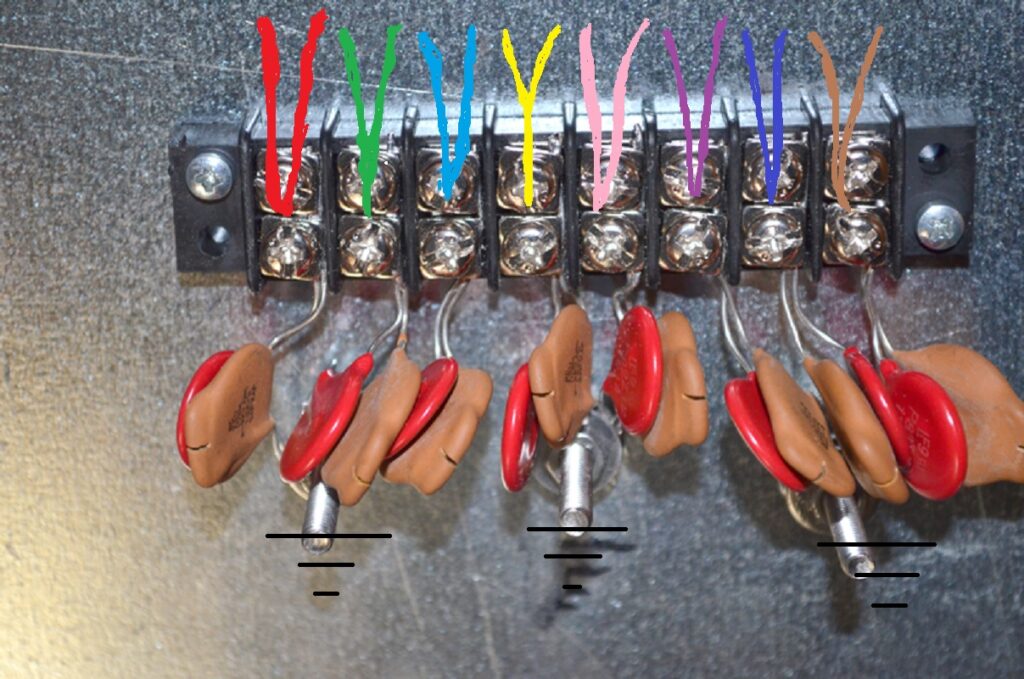
From ground?
Well, can we seriously be hit from the actual ground? But how? Since grounding is meant to protect us, right? That’s Correct! But only when it is done correctly!
First of all, all of the above methods require good grounding. If the ground is not good (the resistance is high), surge current will pass and cause damage! All surge protectors must have the shortest, most low resistance path to ground as possible. Energy from the strike will always travel via the least resistance path to ground, so even if you have a lighting arrestor installed it will not protect you if it doesn’t present a better lower resistance alternative path to ground than the cables connected to your equipment…
It is a best practice to lead all cables to a common entrance to the Shack and there to make an entrance portal (Entry Panel), which is well-grounded with a short cable to ground (Fig. 8).
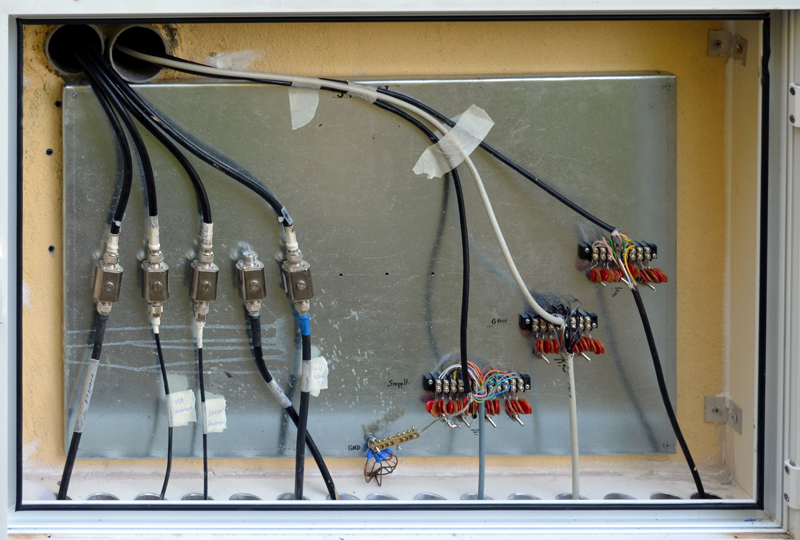
The importance of good grounding
This is where the second mistake is often made: the existence of two or more independent grounds.
All grounds must be “common, indivisible and co-essential”: Lightning grounding, Gas line earthing, Power line grounding, Telephone grounding, Shack grounding, Tower grounding, RF grounding, and any other ground that the human mind can come up with must have a common potential and that must be zero!
So, if we have to put a ground in a different position from that of the Power line ground (which I consider to be pre-existing), we have to connect it to the existing one so that they always have equal potential. Otherwise, in the event of a lightning strike, due to the earth’s resistance and as the lightning strikes the ground, there will be a different potential in one ground than in the other. The difference of potential, as you know, means current… and this does not lead to good things…
A classic case of such damage is when in repeaters without a duplexer, have two separate antennas installed, usually far from each other (RX and TX). If they are grounded, in the event of a lightning strike, there may be a potential difference between the two and… kaboom!
Good grounding means grounding with low resistance
How many repeaters have been damaged this way and we could not find what was the cause… so strictly ONE ground…. and make it a good one! It is very important in the shack that all our equipment is grounded so that it is at the same potential! Yes, you got it right. Even if this is not zero (at the time of lightning this can happen no matter how short our paths to ground), it is important that all our equipment is grounded at the same point, so that they have common potential. After all, what matters is the difference of potential…
Good grounding means grounding with low resistance. Most of us do not have the proper instruments to measure it. Within urban areas, the neutral system used by the PPC, which is grounded and therefore the parallelism of the grounding, helps. But we must, in any case, make the best ground we can. Today, new building constructions usually require foundation grounding of the building, which is the best. Alternatively, the easiest and best solution is the well-known ground triangle. In this case, place 3 earthing rods in the ground at a distance from each other, at least as long as the length of the rods multiplied by 2, and interconnect them. Be careful because otherwise, the triangle will not work properly.
The biggest problem, though, is that the ground connection point is usually buried and uncheckable. There should be a service entrance to the ground trench, in which the connection will be made so that it can be checked.
Special care is also needed if and when aluminium rods are used. Regulations in your area may not allow the use of aluminium as a ground rod, because direct connection with aluminium to copper causes galvanic corrosion and destruction of the connection. As mentioned above, we need to use a brass fitting or other specially designed contact lugs in between.
Conclusions
In conclusion, the most important thing for good lightning protection is good grounding. It must be like the Holy Trinity: Common, Coexistent and Indivisible…
The difference in lightning protection between a commercial telecom tower at the top of a mountain, and ours, is the quality of the grounding system. Usually, in the commercial tower, the ground is better constructed, more reliable and more expensive than an amateur one. Hence much more effective.
The most important thing for good lightning protection is good grounding.
From there on, everything else is easy. Protect the cables that enter the shack and you will be mostly at ease.
What is described above is enough for the average radio amateur. Do these measures fully protect you? If lightning strikes in your general vicinity, yes. If it strikes you directly, probably not. Probably because our grounding will not be good enough to be able to absorb all the strike energy, without some sort of “casualty”.
In any case, there is no requirement for an amateur radio station to operate 24 hours a day. If we see lightning and don’t want to suffer a heart attack, best practice is to immediately disconnect our feedline connectors from our equipment… And we should be fine… that is if we don’t have two “different” grounds…

